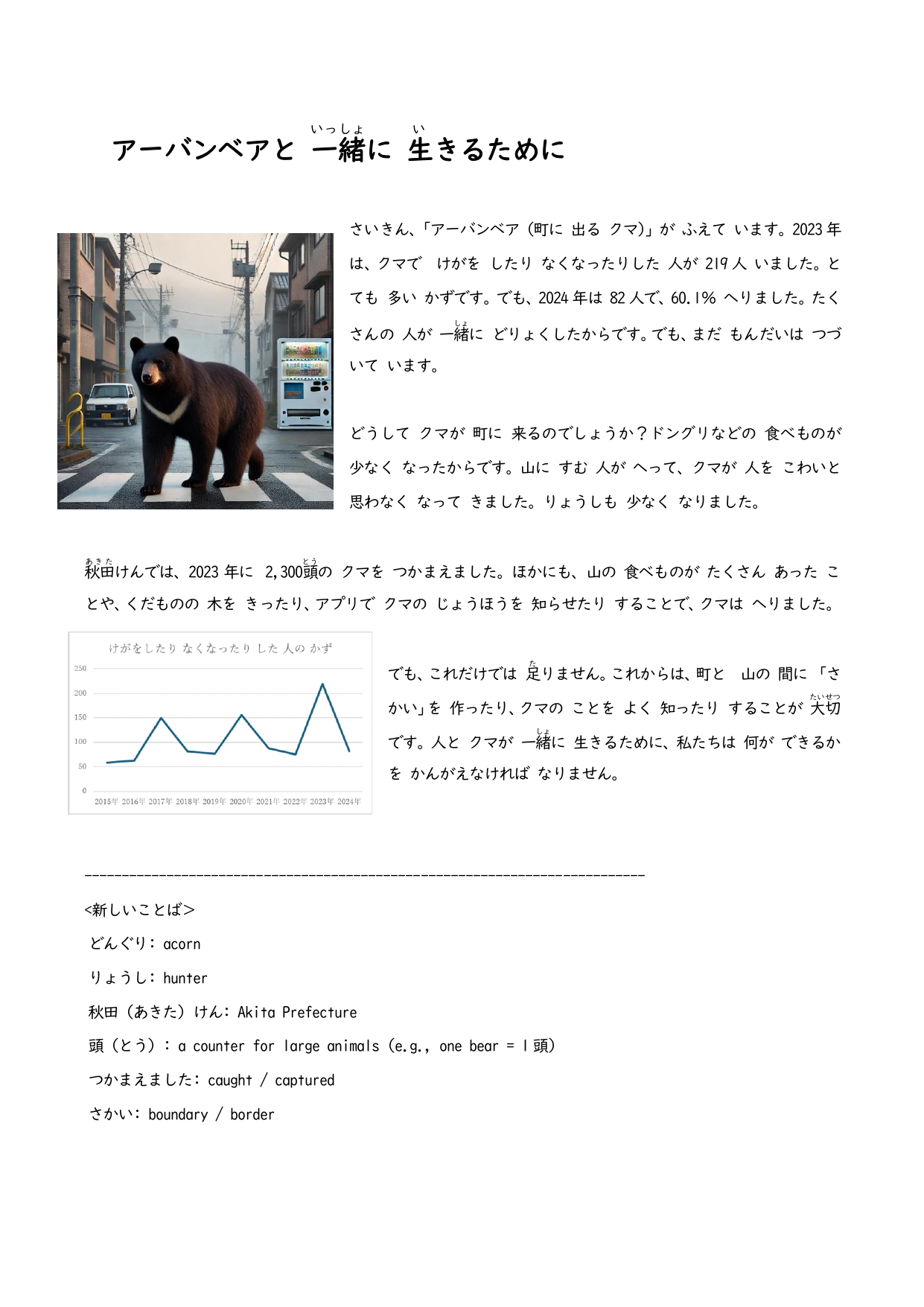
Creating Reading Resources with Generative AI
Adapting Authentic Texts for Students
 Have you ever thought about bringing texts on current topics in Japan into your classroom?
Have you ever thought about bringing texts on current topics in Japan into your classroom?
While it’s possible to find news articles online, it can be difficult to find ones that suit your students’ level, and rewriting them takes a lot of time and effort.
Using generative AI can help solve this issue. It allows teachers to save time and efficiently create authentic reading materials tailored to their students. You can produce a wide range of texts by entering a specific and well-defined prompt to suit learners at different levels.
Benefits of reading simplified authentic texts
The relevance and authenticity of the material can make learning more interesting and meaningful for students. At the same time, because the original texts were written by real people in Japanese society for real-world purposes, students can also gain insights into how Japanese people think and communicate.
So, let’s go through the steps one by one.
Look for an article that is relevant to your teaching content.
Tips for Finding Relevant Articles:
・Search for articles in Japanese using a browser by entering Japanese keywords.
*When English keywords are used, articles that appear may not all be Japanese.
・Articles can then be translated based on the original Japanese article if needed.
The sample below is a mock Japanese newspaper article with its English translation.
1. Simplifying Expressions with Generative AI
The prompt can be in either Japanese or English.
The following is a sample prompt used for this article.

At this stage, the target language level can be indicated in broad terms. You may use any framework that suits your context, such as “JLPT N5” or “CEFR A1.”
You can further adjust the generated text multiple times by using prompts such as “make it easier” or “make it slightly more difficult” to better match your students’ proficiency level.
In this example, although the prompt specified an N5 level, some expressions exceed that level in difficulty, while some basic kanji are written in hiragana. For demonstration purposes, we will assume that the highlighted sections contain expressions unfamiliar to students and revise them accordingly. These kinds of adjustments are best made by the teacher, who has the most accurate understanding of which expressions students have already learned and which they have not.
*If no further adjustments are required, please proceed to STEP 3.
2.Teacher’S Readjustment and Rechecking with Generative AI
Adjust the highlighted parts to a designated level, and then you can run a final check by using some prompts as below.

With these changes, the reading passage is now complete.
(Click the image to enlarge)
You may choose to add a vocabulary list, explanation and/or images to the reading material to support students’ reading.
In the sample below, the highlighted sections are marked which require some explanation.
There are three main ways to provide supplementary explanation:
・Adding direct translations (teacher to write manually)
・Using images, diagrams, or graphs
・Designing pre-reading tasks that encourage students to infer meaning (see STEP 4)
Adding images can help convey the author’s message more clearly and provide a valuable opportunity for students to practise how to interpret visual information effectively.
You can also use generative AI to create questions and tasks for the reading material you developed in STEP 3, such as:
・Pre-reading questions
・Top-down questions (that ask students to skim the text and identify the theme or main idea)
・Bottom-up questions (that ask students to identify what demonstratives or figures refer to)
・Comprehension questions/tasks
・Questions on writers’ intentions and purpose
・Post-reading tasks
In this example, all tasks were generated at once using the prompt below, but you can also break it down and create them step by step if you prefer.
When using a prompt, make sure to attach the file containing the reading material you have created.

The following questions and tasks were generated by AI using this prompt. Some of them can be used as they are, while others may need to be revised. It is appropriate for the teacher to decide which to use and to make any necessary adjustments.
The final sample reading resource, complete with the selected and refined questions and tasks, can be downloaded below.
Please click here to view the sources used to develop the samples.










